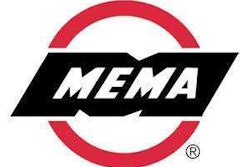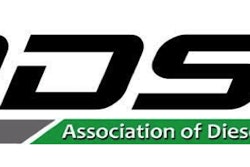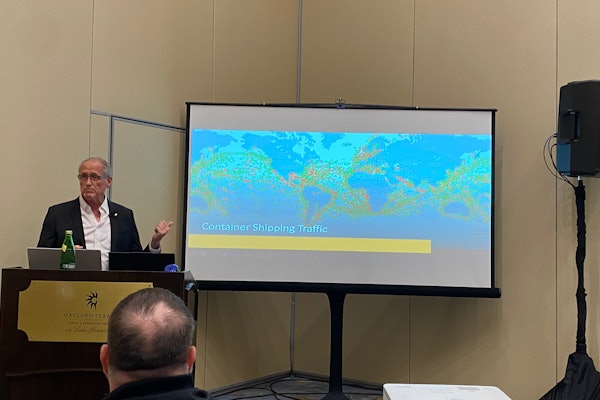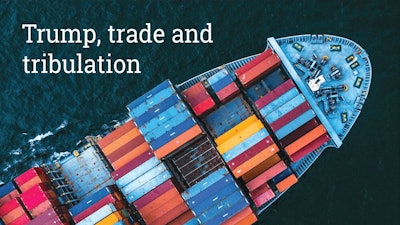
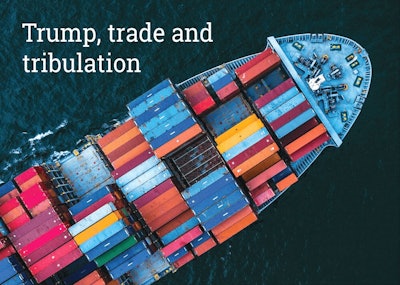
Part of President Donald Trump’s platform when running for office four years ago was to address the foreign trade imbalance. It’s doubtful a business would be against a more level playing field with its global trading partners. However, when Trump took action last year, he did so with both guns blazing.
While his deliberate measures were celebrated by certain business sectors and C-level executives, other industries didn’t view them to be quite as helpful — most notably, the aftermarket industry.
“The White House is saying the president was elected, in large part, to restructure our trade policy in the U.S. and I don’t think you can find a single one of our members who doesn’t agree with him that we want free, open trade that makes the U.S. more competitive,” says Ann Wilson, senior vice president of government relations, Motor & Equipment Manufacturers Association (MEMA). “The problem people need to understand is these tariffs are not being paid by other countries like China or Europe. These are being paid by manufacturers in the United States.”
What Trump has done
Effective March 23, 2018, Trump imposed a 25 percent tariff on steel imports and a 10 percent tariff on aluminum imports, with exemptions for certain countries and a process for companies seeking exclusions. His decision was based on the findings of two reports by the Department of Commerce (DOC), which concluded the global excess capacity for producing steel and aluminum is “weakening our internal economy” and jeopardizing national security.
Following an investigation into intellectual property violations by China, 25 percent tariffs went into effect on $34 billion worth of various Chinese imports on July 6, 2018, 25 percent tariffs went into effect on another wide array of imports worth $16 billion the following month and 10 percent tariffs went into effect on roughly $200 billion worth of assorted imports on Sept. 24, 2018.
On Feb. 17, 2019, the DOC sent to the White House a report regarding possible tariffs on imported vehicles or vehicle parts. The president has 90 days from receipt of that report to determine if any action is necessary, and then he has an additional 180 days to continue conversations with any countries negotiating trade terms with the U.S.
Also in play is the United States-Mexico-Canada Agreement (USMCA) signed in October 2018. The pact is an update of the North American Free Trade Agreement. While the signing could save the $1.2 trillion open-trade zone it created between the countries in 1994, it gives Trump the ability, on the grounds of national security, to place quotas on vehicles and parts Canada and Mexico can export into the U.S. The USMCA must still be ratified by the three countries.
Again, the concept of balanced trade and protecting the U.S. from intellectual theft is supported by many; it is the extents to which Trump has gone that has affected the trucking industry and created concern about future moves from the president.
Already making an impact
Keeping tabs on Washington as well as being an outspoken defender of the industry throughout all of this is MEMA, parent organization of the Heavy Duty Manufacturers Association (HDMA).
“What you’re seeing here is a significant increase of costs in steel, aluminum and inputs from China, including [goods] like motors or other parts that come into the U.S. and are being used for further manufacturing,” says Wilson.
“It’s important to keep in mind the cumulative impact of these tariffs have been significant on motor vehicle suppliers, including the heavy-duty aftermarket,” says Wilson. “You’d be hard-pressed to find a member of the heavy-duty aftermarket who isn’t impacted either by steel and aluminum purchases or importation of inputs from China.”
Wilson adds the good year the trucking industry had in 2018 might be masking the impact of what’s happening in the industry now. Furthermore, she says, CEOs are pleased with the tax cuts the administration was able to get through Congress, but the tariffs on aluminum, steel and goods coming from China have “virtually evaporated” the benefits of the tax cuts.
Earlier this year MacKay & Company conducted a survey of component manufacturers and distributors concerning price increases. Distributors and suppliers reported trying to pass on price increases to customers and OEMs, respectively, with mixed if not disappointing results, says John Blodgett, vice president of sales and marketing. He adds the price increases weren’t all tariff related; demand for components played a role, too.
In the survey, one distributor reported being unable to raise pricing because of a competitive marketplace and, thus, had to lower its profit margin. Another distributor began looking for sources of components unaffected by the tariffs or those that just had better pricing, Blodgett says.
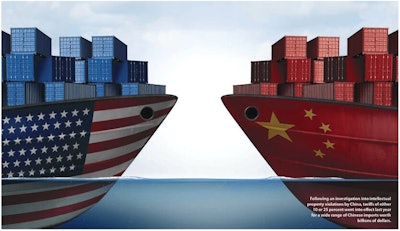
“We get those comments all the time. ‘Hey, why is it 10 percent higher?’ The question of price has become more of an issue than it has in the past,” he says. “When prices typically go up 1 or 2 percent, I think people expect that. And a lot of people don’t understand that even if they’re buying a product locally, it isn’t a local product. [Price increases caused by tariffs] are a shock to the system. Even if it’s a $50 part, it starts to add up.”
Like the comments MacKay & Company received in its survey, Midwest Wheel has had to keep one eye on other aftermarket providers and not raise prices on all parts affected by the tariffs.
“In some cases, competition is slow to raise their prices. It’s a case-by-case basis. If we do hold off, it’s usually a hyper-competitive line,” Callison says. “You don’t want to be the guy that’s 10 percent higher right out of the gate when your competition isn’t, so there is short-term margin erosion.”
Many suppliers are tight-lipped on the tariff topic; however, from Callison’s perspective, “Every vendor has been impacted in some way and it has been passed on to the distributor. I don’t think anybody is immune.”
What’s more, he says vendors have been handling their price increases in different ways, creating confusion for the distributor community. Some suppliers are sending out new price sheets every month or two, some are adding a surcharge to the end of invoices, while others have held off on raising prices.
“There’s a lot of inconsistency from vendor to vendor and keeping it managed is difficult for us. I can’t imagine if you have a small staff and are trying to keep up with it,” Callison says.
Lending an OEM perspective on the trade issue is Daimler.
“As a globally active company, Daimler welcomes trade agreements that reduce trade barriers and promote free and fair trade. Free trade and investments are key factors for innovation, employment, growth and prosperity,” says a Daimler spokesperson.
“The U.S. tariffs on steel and aluminum increase the cost of U.S. vehicle production. We have taken the appropriate measures,” the spokesman says. The company declined providing details for competitive reasons.
Uncertain business climate
What makes the trade issue problematic and worrisome for the aftermarket and dealer communities is the remain-ing uncertainty of it all. Most would agree the president can be unpredictable; negotiations with certain countries, such as China, are ongoing; additional or increased tariffs are still on the table; and there’s an ongoing threat of the U.S. closing its southern border, which could drastically affect trade.
To say the trade situation is fluid right now might be an understatement.
Take Trump’s statement in late March that he was considering closing the U.S.-Mexico border and imposing new tariffs on auto and parts imports from Mexico if the country “for any reason … stops apprehending and bringing the illegals back to where they came from.”
Trump’s comments elicited an immediate response from a consortium of associations urging the president not to proceed with the tariffs.
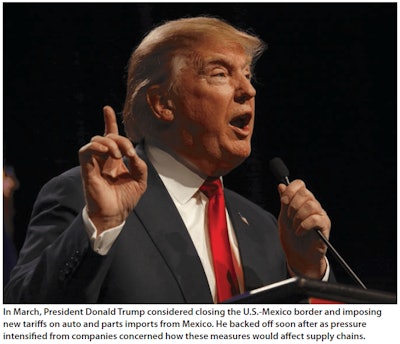
The associations that sent the letter include: The Association of Equipment Manufacturers (AEM), Truck & Engine Manufacturers Association (EMA), Associated Equipment Distributors (AED), the HDMA, the American Bus Association (ABA), the Remanufacturing Industries Council, the American Rental Association (ARA) and the National Marine Manufacturers Association (NMMA).
Four days after Trump’s warning, he backed off as pressure increased from companies concerned what such moves would do to supply chains.
Manufacturers prosper when they have certainty. For example, regulations detail how manufacturers should produce goods so they are in compliance with the law. They also prosper when they have economic and trade certainty, Wilson says.
“What this particular trade battle has done is decreased or eliminated any kind of economic or trade certainty that our manufacturers have in the U.S.,” Wilson says. “If you’re a smaller manufacturer, for example, it increases your costs and makes you wonder if you’re going to be able to hire new people. If you’re a global manufacturer, it decreases your willingness to make investments in the U.S. because you don’t know if those investments are going to stand the test of time.”
According to a Daimler spokesperson, “Companies depend on reliable framework conditions, transparency and predictability in order to make long-term investments. Trade disputes always entail uncertainties, both for companies and for customers.”
Callison agrees a trade situation in flux is not good for anyone. “Any unknown isn’t good for business. How do you make a long-term plan?” he says.
What can be done?
MEMA stresses it has been very clear to the administration that the imposition of widespread tariffs is hurtful to the economy and this industry. Furthermore, the impact also is felt in the communities where manufacturing companies and their employees are located, Wilson says.
“When it comes to issues with China, we have applauded the administration’s efforts to address issues such as intellectual property violations and mandated technical transfers, and have applauded the continued negotiations with China. We just do not believe widespread tariffs are the tool to use to address those issues,” she says.
Regarding the position that the importation of motor vehicles or parts pose a national security risk to this country, Wilson says, “We are dependent on the free flow of goods. It has made our country and our economy stronger. We believe the imposition of these tariffs will actually hurt the economy and, long term, could pose their own type of national security risk by the damage they could do.”
Wilson adds the association and the industry have the support of several legislators from both sides of the aisle, including Sen. Lamar Alexander (R-Tenn.), Sen. Doug Jones (D-Ala.), Rep. Ron Kind (D-Wis.), Sen. Rob Portman (R-Ohio), Sen. Pat Toomey (R-Pa.) and Rep. Jackie Walorski (R-Ind.). “They’ve all been very active in this,” she says.
Wilson also stresses the importance of industry stakeholders contacting their government representatives, whether they be state or federal officials because these officials might not be aware they have companies in their district or state that are being affected — and might be further impacted if additional trade measures are implemented.
Many elected officials don’t think they represent the motor vehicle industry because they don’t have an assembly plant in the areas they represent. But chances are, Wilson says, they have a supplier in their district and they don’t realize it. They often need to be made to understand the impact it could have on the supplier community and its employees.
“Members of the heavy-duty aftermarket, who are paying more for steel and aluminum as well as their imports from China, need to reach out to their elected officials now. And we can help them do that if they don’t know how to do it themselves,” Wilson says.
The trade landscape has changed, according to Wilson, who says what the president has done, in a baker’s world, is akin to dumping a 5-lb. bag of flour on the kitchen floor.
“He has really reset many of the [trade] objectives, many of the preconceived notions of how we’re going to proceed and who we’re going to negotiate with,” she says.
“Even if we want to say there are things that will be addressed during this administration or under a different ad-ministration, so much has changed and I don’t think anyone should be under the misconception that we’re going to return things to the way they were prior to when Trump was elected. It’s just not going to happen,” Wilson says. “It’s the 5-lb. bag of flour. You’re not going to get all the flour back in the bag.”

